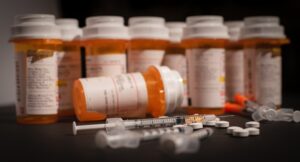21 CFR Part 117 (PCHF) – Preventive Controls for Human Food with V5
The FDA’s Preventive Controls for Human Food rule—21 CFR Part 117—moves food safety from “paper after the fact” to enforcement at the point of execution. It combines updated cGMPs, a documented hazard analysis, defined preventive controls, and rigorous monitoring, corrective actions, verification, and recordkeeping. The outcome regulators want is simple: prove that hazards are prevented, not just described.
SG Systems Global equips plants with V5 Traceability, a single platform that enforces food safety plans in real time. V5 hard-gates production steps, ties monitoring to decisions, and seals every record with audit trails and signatures (see 21 CFR Part 11). The result: operators can’t proceed out of spec; supervisors can’t release without evidence; auditors get contemporaneous, tamper-evident proof.
“We stopped treating PCHF as paperwork. With V5, controls are enforced at the line. Deviations trigger actions, not debates.”
— VP, Food Safety & Quality
How PCHF Is Structured—and Where V5 Fits
21 CFR 117 is organized around: (1) cGMPs (Subpart B), (2) the Food Safety Plan with Hazard Analysis and Preventive Controls (Subpart C), (3) Records (Subpart F), and (4) the Supply-Chain Program (Subpart G). V5 maps directly onto these requirements and turns them into executable rules on the floor.
Subpart B — cGMP: People, Sanitation, Equipment, Environment
Training & Qualified Personnel
V5 ties user login to a training registry so only qualified staff can perform controlled tasks. If training is missing or expired, the step is blocked until retraining is recorded. Completion and retraining are captured with e-signatures (see Part 11). Managers see status by line, team, or role.
Sanitation, Cleaning Verification & Environmental Controls
Sanitation schedules, SSOPs, and pre-op checks are embedded as gates in V5. No cleaning confirmation = no batch start. Environmental readings (temperature, humidity, swabs or micro checks if used) can be logged; excursions auto-hold product and launch corrective flows. Equipment with overdue cleaning or maintenance can’t be released until cleared (see Asset Management).
Allergen Control & Label Accuracy
V5 enforces allergen segregation and label integrity. Only approved label versions can print; changeovers require allergen clean-down verification; non-conforming labels or missing allergen declarations block release (see Allergen Control).
Subpart C — Food Safety Plan, Hazard Analysis & Preventive Controls
Food Safety Plan: From Static Document to Enforced Workflow
V5 models your Food Safety Plan (FSP) with structured hazards, controls, monitoring, corrective actions, and verification steps. The plan is version-controlled and approved with digital signatures; each element is bound to the execution layer so operators can’t bypass critical checks. Trend reviews and reanalysis prompts are scheduled and logged.
Hazard Analysis (Biological, Chemical—including Allergens—Physical)
Hazards are cataloged by product, line, and step. For each “hazard requiring a preventive control,” V5 links the control type (process, sanitation, allergen, supply-chain, other), parameters and limits, monitoring frequency, corrective action logic, and verification method. This gives auditors a single chain from risk → rule → record.
Process Preventive Controls (Time, Temperature, pH, Moisture, Flow)
V5 enforces process limits during batching and processing. If a reading falls outside validated ranges, V5 requires hold/disposition before the workflow can continue. Recipe steps, tolerances, and weighing rules are interlocked with scale hardware to stop wrong-material or out-of-tolerance additions (see Formula Control & Batching).
Sanitation Preventive Controls
Cleaning tasks are scheduled, executed, and e-signed in V5. Required verifications (e.g., ATP or visual inspection fields if you capture them) are enforced. Non-completion or failed verification prevents the next production step from starting, ensuring sanitation is not “paper only.”
Allergen Preventive Controls
V5 enables allergen-aware material flow. Ingredients are barcode-verified; wrong lot or wrong label triggers a hard stop. Changeovers insert mandatory allergen clean-down steps; packaging relies on approved label templates only (see Allergen Policy and Allergen Program).
Supply-Chain Preventive Controls
Where a supplier controls a hazard, V5 implements a Quality-Enforced Receiving gate. Supplier status, COAs, and required verifications are checked before lot acceptance; failures automatically quarantine the lot and open corrective action (see Quality-Enforced Receiving). Annual supplier re-verification reminders and audit documentation live in the same system.
Monitoring: Contemporaneous Proof
Every monitored parameter is captured at the time of work and bound to the user, time, asset, and lot. V5 validates completeness (no missing fields) and confirms that frequency and method match the plan. Records are sealed with audit trails and signatures in line with Part 11 controls.
Corrective Actions: From Exception to Evidence
When limits are exceeded, V5 can auto-hold the lot and launch a corrective workflow: root cause, disposition (rework, reject, reprocess), approvals, and verification of effectiveness. Related training updates or SOP changes can be linked so systemic issues are addressed, not just patched (see Training & Certification and Compliance Checklists).
Verification: Record Review, Trend Analysis & Reanalysis
Supervisory verification is enforced by V5 with timed reviews, countersignatures, and dashboard alerts. Trend analysis (by line, product, shift) helps detect control drift before it becomes a deviation. Reanalysis of the Food Safety Plan is prompted by time or change; approvals and rationales are logged and immutable.
Subpart F — Records: Tamper-Evident, Searchable, Audit-Ready
PCHF requires comprehensive, retrievable records: hazard analysis, controls, monitoring, corrective actions, verification, validation, and reanalysis. V5 stores these as sealed e-records with full audit trails and e-signatures (when used). Search by product, lot, date, line, operator, deviation, or CAPA. Export for regulators or customers in one click (see eBMR and Global Batch Traceability).
Subpart G — Supply-Chain Program: Qualified Suppliers, Qualified Lots
V5 ensures no lot enters production without supplier verification. Approved suppliers, audit records, COAs, and testing requirements are linked to receiving. If something’s missing or out-of-spec, V5 quarantines automatically. Downstream, genealogy ties finished goods to every inbound lot for instant recalls (see USDA/FSIS (HACCP) Example for analogous logic).
End-to-End Example: From Dock to Release
Receiving & Quarantine. Ingredients arrive. V5 checks supplier status, COAs, specifications, and sampling plans. Fails = quarantine + corrective action. Pass = putaway with status and expiry controls. (See Quality-Enforced Receiving.)
Staging & Weighing. Materials are picked and verified by barcode; V5 confirms identity, lot, and status. Scales interlock tolerances; wrong material or out-of-range additions are blocked. Witness checks can be required (see Formula Control).
Processing. Validated parameters (time, temperature, pH, etc.) are enforced; readings outside limits hold the lot and launch corrective workflows. Monitoring is contemporaneous; supervisors review and sign off in V5.
Sanitation & Changeover. Between runs, V5 inserts mandatory cleaning/inspection steps. Allergen changeovers require additional confirmations. No clean, no run.
Packaging & Labeling. Only approved label templates are available; version control prevents old art from leaking back. Allergen statements and claims are locked to the spec.
Release & Distribution. Final QA review checks that all monitoring is complete, deviations are closed, and verifications are signed. Release generates a complete, sealed history for audit or customer requests (see Batch Records & Traceability).
Auditor View: What They’ll See in V5
- One-to-one mapping from hazard → control → monitoring → corrective action → verification → reanalysis.
- Immutable records with audit trails and signatures (Part 11).
- Supplier assurance tied to receiving and lot status (QER).
- Real-time blocks that prevent running out of spec (tolerances, allergens, sanitation, labels).
- Traceability forward/backward by lot, ingredient, asset, shift, and person (GBT).
Related Reading
- 21 CFR Part 11 – Electronic Records & Signatures
- GAMP 5 – Software Validation
- Electronic Batch Manufacturing Record (eBMR)
- Global Batch Traceability
- Quality-Enforced Receiving
- SQF – Compliance with V5
- USDA FSIS – Digital HACCP & Traceability
- 21 CFR 210/211 – Pharma CGMP
- 21 CFR 111 – Supplements
- Controlled Substances – DEA & GMP
Bottom line: PCHF requires prevention, not paperwork. V5 makes that non-negotiable: controls are enforced in real time, records are sealed, and audits become demonstrations—not scavenger hunts.



